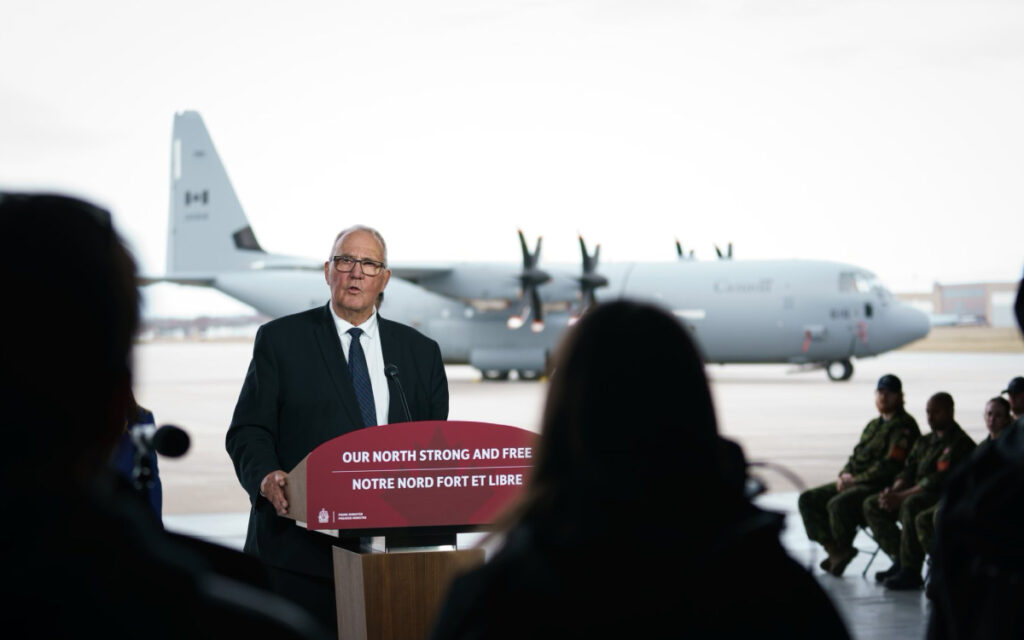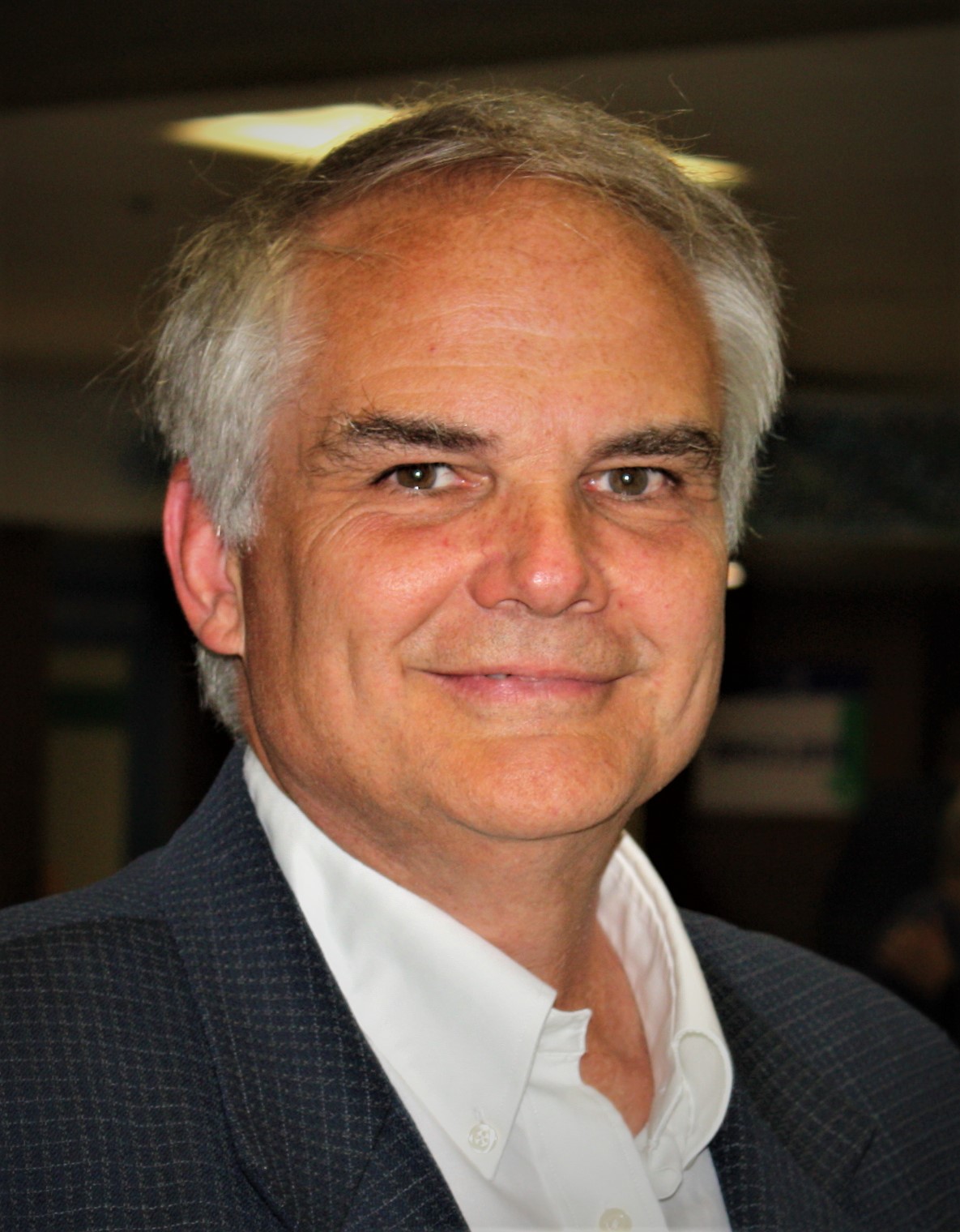
The hollow promises found within the latest defence document will not reassure Canada’s allies, certainly do not deter our adversaries, and they should not comfort Canadians. Pictured: National Defence Minister Bill Blair. Photo Credit: Bill Blair/X.
One of the most important duties of any federal government is to provide adequate national defence for the protection of its citizens. This week’s revelations at the foreign affairs inquiry and the announcement of the country’s defence policy update suggest the Trudeau government has abdicated its responsibilities when it comes to defending Canadians.
Indeed, if one imagined Prime Minister Justin Trudeau as Canada’s flag bearer in the midst of the current global conflicts, he seems to have purposefully dropped our red and white ensign – it lays soiled on the ground – and Trudeau and his posse have deserted the field.
On Monday, Trudeau was joined by Defence Minister Bill Blair and Deputy Prime Minister and Finance Minister Chrystia Freeland at Canadian Forces Base Trenton to announce his government’s defence policy update, packaged under the title of Our North, Strong and Free. This policy update has been two years in the making since it was first announced in the government’s 2022 budget – and it is the first major defence policy government statement since 2017.
At the media conference, Trudeau highlighted the dollar figures dedicated to the nation’s security: promises of $73 billion over the next 20 years, including a total of $8.1 billion over the next five years, to be mentioned in next week’s federal budget.
The spending is to add muscle to Canada’s armed forces by the mid-2040s with long-range missiles, tactical helicopters and early-warning aircraft. Over the next two decades there’s $9.5 billion to build a strategic reserve of ammunition and $10.2 billion to maintain and repair military facilities like runways and piers.
Trudeau mentioned Canada’s “most urgent and important task” is guaranteeing sovereignty in the arctic, where Russia and China are making their military presence known. To respond to this threat, the government restated its $38 billion of promises made in June 2022 when Canada was pressed by the United States to make a public commitment to help modernize NORAD, North America’s defence system partnership. On Monday, Trudeau repeated the pledge to explore the options of new submarines to patrol the Northwest Passage, help establish military bases (Northern Operational Support Hubs), build an arctic satellite ground station, and acquire specialized maritime sensors to conduct ocean surveillance.
There was much more bundled into the government’s official policy update. The government plans to enhance intelligence, cybersecurity, and AI capabilities with the establishment of a Canadian Armed Forces Cyber Command. Also, it recommitted $4 billion in military assistance for Ukraine, and $910 million to support military operations in the Middle East, Indo-Pacific region, and Ukraine. It promised to do more for the environment and climate change by focusing on “cyber attacks, disinformation, and foreign interference.”
It also committed nearly $1 billion over 20 years to support culture change and wellness in the forces, “to further integrate gender equality and diversity” and ensure “the integration of gender perspectives in military operations and institutions.”
For all that was included in the promises made on Monday morning, it is what was not promised that is perhaps the biggest headline for the country’s defence policy. Canada’s spending on defence is to increase from 1.38 to 1.76 per cent of GDP over the next five years, but it still falls considerably below the NATO threshold set at two per cent. In answering to this criticism, Trudeau resorted to fingering his favourite bogeyman, Stephen Harper: “When we took office in 2015, we had a Canadian Armed Forces that had been significantly underinvested in by the previous government.”
By Trudeau’s accounting, under his watch, his government has doubled defence investments. But Conservative defence critic James Bezan challenges this claim: “The Liberals’ first defence policy document (in 2017), Strong, Secured, Engaged, was a book of empty promises. They missed every marker set out in the original defence policy for defence spending, resulting in massive gaps in equipment and readiness. Trudeau has overspent in every department except our military, yet his government promised to cut almost $1 billion annually from the defence budget and allowed over $10 billion more to lapse over eight years.” Bezan argues promises to spend in 2017 did not result in the needed investments in Canada’s military.
Of the multi-billion dollar promises made in Our North, Strong and Free, the costliest promises are for the next government(s) to keep more than a decade from now. The Trudeau government has provided a backloaded plan with only 11 per cent of it being acted on in the first five years.
For this fiscal year 2024-25, Trudeau is committing only $612 million of new funding. And in the same breath that Trudeau promises to spend $3.4 billion in the next three years, the Liberal government has also indicated they intend on trimming $2.5 billion from the defence budget in their government-wide spending reallocation initiative. This appears to be a proverbial shell game.
Although the defence policy update was quickly eclipsed by other national issues and political revelations this week, there appeared a critical consensus that the government misfired with its announcement. Bezan stated: “Instead of ‘exploring options,’ the brave women and men in the Canadian Armed Forces need new kit, better training, and investments in their futures today, not 20 years from now.” Bloc defence critic MP Christine Normandin said: “It’s not more than numbers on a piece of paper to me considering nobody’s bound to it for the future.”
Consider the current state of Canada’s military. According to an internal defence department report from 2023, Canadian forces is short 16,000 troops and only 58 per cent of current personnel are sufficiently trained to be deployed. The same defence report cites that half our equipment is “unavailable or unserviceable” and provides the example of the four diesel submarines used in defending the arctic, of which two spent the last four years in drydock.
As part of a cost-cutting budget initiative, the Canadian Forces cancelled its RCAF fighter pilot training program and outsourced this training to an American firm (some will not find anything wrong with this as Canada has no modern fighter planes for our pilots to fly). Due to lack of personnel and/or equipment, Canadian military were not part of allies’ recent military exercises: NATO’s training in the arctic, U.S. led drills in south China sea, and a number of NATO initiatives in Europe in support of Ukraine. And there are recent embarrassing reports of Canadian personnel attending food banks to feed their families and needing to use personal credit cards for living expenses overseas.
Given all of this, the hollow promises found within the latest defence document will not reassure Canada’s allies, certainly do not deter our adversaries, and they should not comfort Canadians.
The last word this week goes to Lt.-Gen. (retd.) Michel Maisonneuve, who provides a stark assessment of the Trudeau government’s defence record. He pulls no punches when stating: “The world has become more — not less — dangerous since 1949; threats range from non-state actors to terrorism, to corruption, to a new ‘Axis of Evil’ and now to state-on-state aggression and shooting wars, cyber-attacks and everything in between. And Canada is truly defenceless against many of those threats because of our government’s disregard of security issues and focus on the climate-change ‘crisis,’ special interests, social programs and identity politics.”
Our North, Strong and Free is nothing more than a compilation of billion dollar promises for action sometime in the next 20 years. As such, it is not a responsible national defence plan but rather an indication that the Trudeau government has gone AWOL on its citizens and allies. The Canadian defence question that remains is whether on the other side of the 2025 federal election those who are left to carry on can recover our red and white, lift it from the ground, and make a stand to guard the country, its interests, lands and people.

Chris George is an advocate, government relations advisor, and writer/copy editor. As president of a public relations firm established in 1994, Chris provides discreet counsel, tactical advice and management skills to CEOs/Presidents, Boards of Directors and senior executive teams in executing public and government relations campaigns and managing issues. Prior to this PR/GR career, Chris spent seven years on Parliament Hill on staffs of Cabinet Ministers and MPs. He has served in senior campaign positions for electoral and advocacy campaigns at every level of government. Today, Chris resides in Almonte, Ontario where he and his wife manage www.cgacommunications.com. Contact Chris at chrisg.george@gmail.com.






